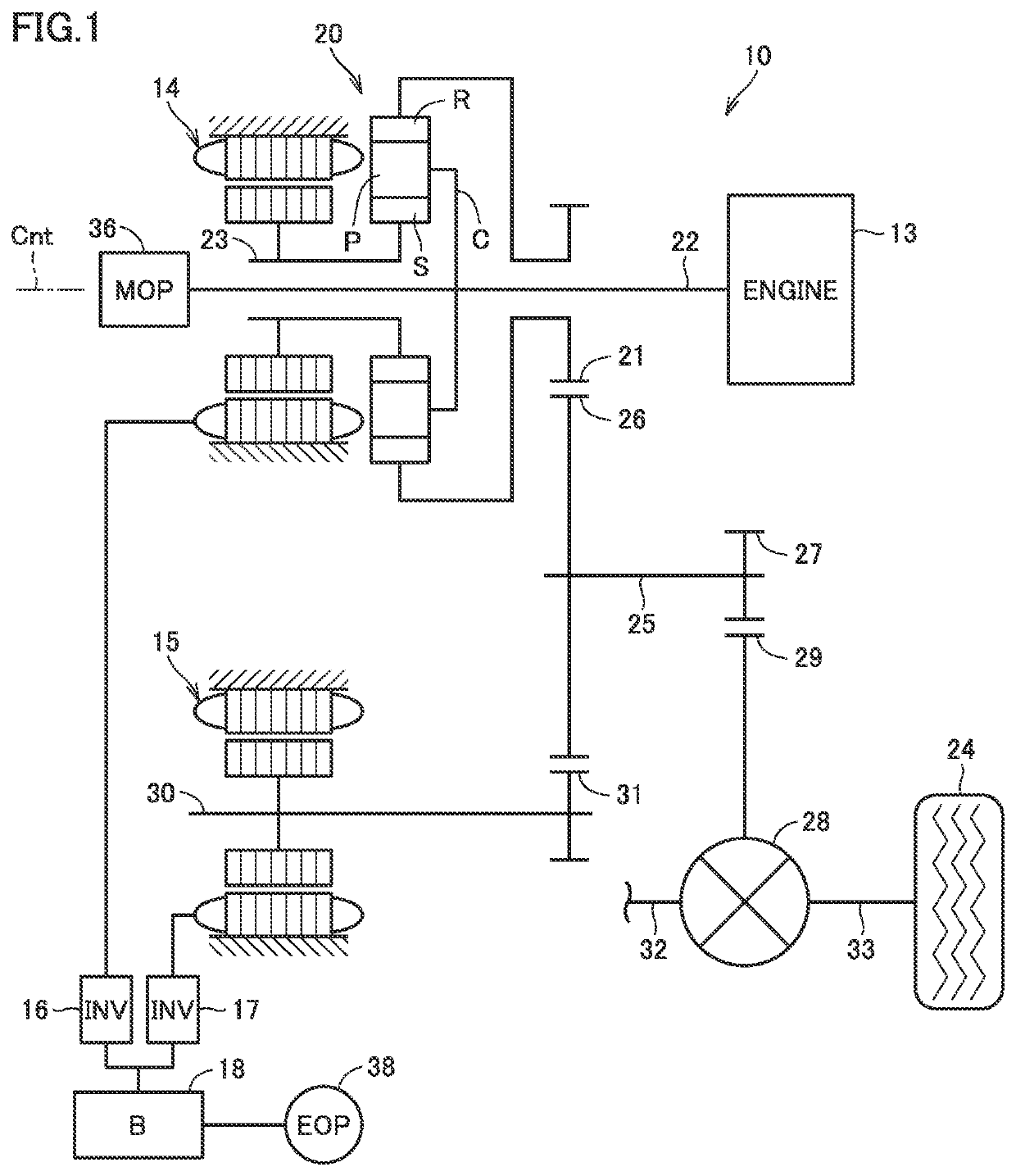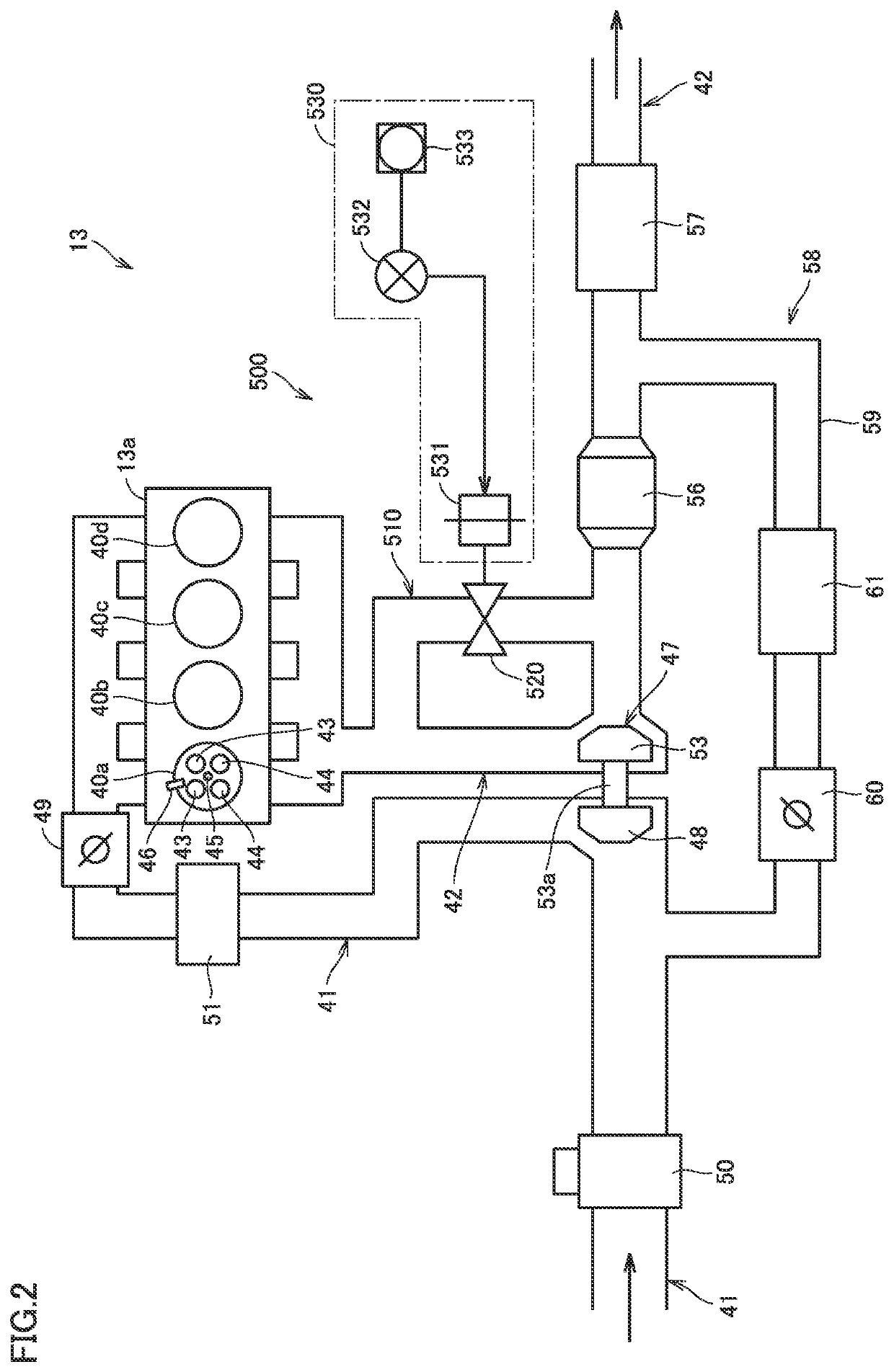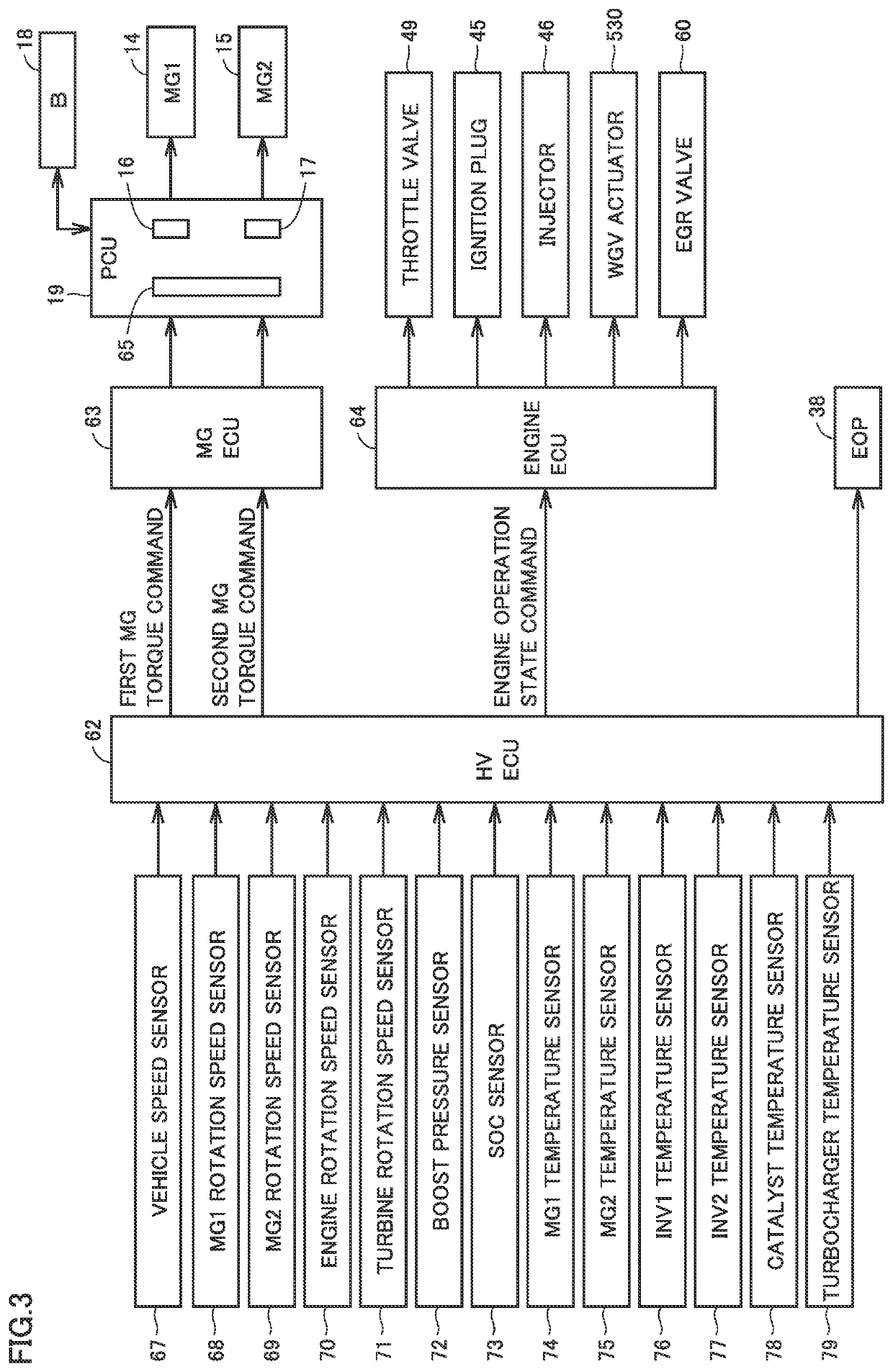Hybrid vehicle and method of braking hybrid vehicle
a hybrid vehicle and hybrid technology, applied in the direction of electric devices, battery/fuel cell control arrangement, electric control, etc., can solve the problems of reduced engine loss, inability to regenerative braking, so as to reduce the electric power input to the power storage, suppress the overcharging of the power storage, and achieve the effect of large braking force applied by the engine brak
- Summary
- Abstract
- Description
- Claims
- Application Information
AI Technical Summary
Benefits of technology
Problems solved by technology
Method used
Image
Examples
Embodiment Construction
[0045]An embodiment of the present disclosure will be described in detail below with reference to the drawings. The same or corresponding elements in the drawings have the same reference characters allotted and description thereof will not be repeated. An electronic control unit is also referred to as an “ECU” below. A hybrid vehicle is also referred to as an “HV” and an electric vehicle is also referred to as an “EV”.
[0046]FIG. 1 is a diagram showing a drive device of a hybrid vehicle according to this embodiment. Though a front-wheel drive four-wheel hybrid vehicle is assumed in the embodiment, the number of wheels and a drive scheme can be modified as appropriate.
[0047]Referring to FIG. 1, a drive device 10 of the hybrid vehicle (which is also simply referred to as a “vehicle” below) includes an engine 13 and motor generators (MGs) 14 and 15 as sources of motive power for traveling. Each of MGs 14 and 15 is a motor generator that performs both of a function as a motor that output...
PUM
 Login to View More
Login to View More Abstract
Description
Claims
Application Information
 Login to View More
Login to View More - R&D
- Intellectual Property
- Life Sciences
- Materials
- Tech Scout
- Unparalleled Data Quality
- Higher Quality Content
- 60% Fewer Hallucinations
Browse by: Latest US Patents, China's latest patents, Technical Efficacy Thesaurus, Application Domain, Technology Topic, Popular Technical Reports.
© 2025 PatSnap. All rights reserved.Legal|Privacy policy|Modern Slavery Act Transparency Statement|Sitemap|About US| Contact US: help@patsnap.com



